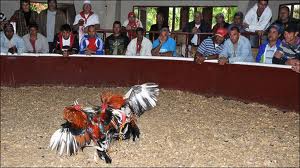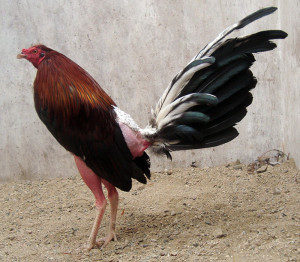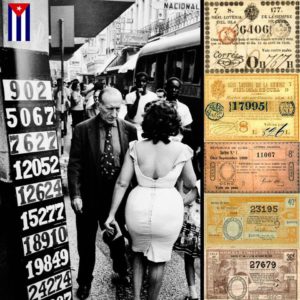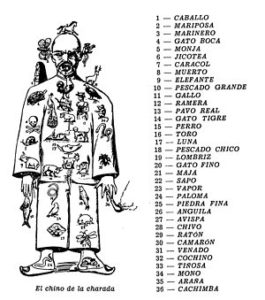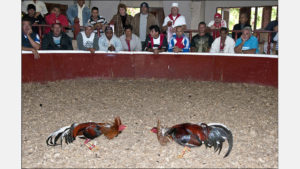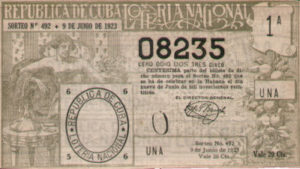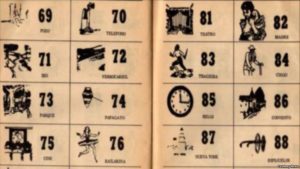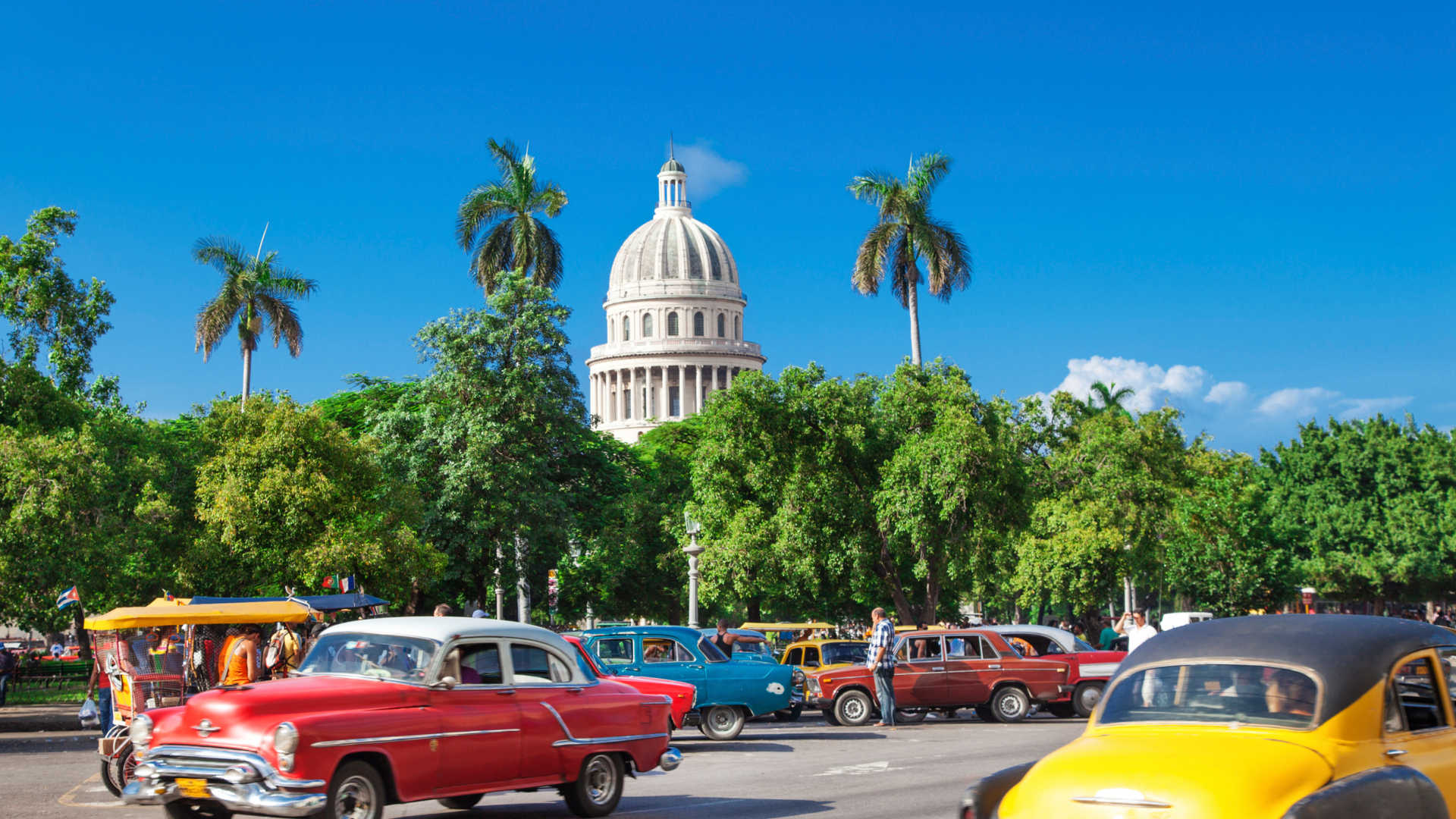For Cubans, the big attraction is betting.
First of all there are cockfights. Christopher Columbus brought the first fine roosters and the early settlers soon extended the practice of fighting them. In a town under construction, before the school and sometimes before the church itself, the fence of roosters was built, citing writers of colonial times.
It was in this space where whites and blacks, without distinction, crossed their bets. Emilio Roig said: “The fondness for roosters is manifested here in all times and circumstances since Havana was no more than the port of Carenas.” The thing came to such an extent that the Captain General Francisco Dionisio Vives had his own galleria in the courtyard of the castle of La Fuerza, and for him to take care of it he removed from prison a certain Padrón, convicted murderer and confessed, who was an expert in those things.
Colonel Wood, head of the US comptroller government, suspended cockfights and bullfights. With the advent of the Republic, the topic of roosters came back to the fore. Contrary to the authorizations of the fights again, Máximo Gómez, General Miró Argenter, Manuel Sanguily and other respected figures were revealed.
The same president of the Republic, Tomás Estrada Palma, was opposed to the idea and the matter was apparently forgotten until in the days of the second American intervention the militants of the Liberal Party, which had on its emblem the images of the rooster and the plow They made the issue an electoral claim. José Miguel Gómez wins the Presidency, takes office on January 28, 1909 and already the 1st. In February, the Parliament discussed the law that reestablished cockfighting, which would be approved.
The advent of the revolutionary process once again prohibited cockfighting, although it is one of the illicit activities that has most boom in Cuba, the Cuban peasant does not conceive why they are prohibited for them, but not for the peasant turned into Commander of the Revolution Guillermo García , which governs this business for the enjoyment of foreigners in various parts of the country (and for the enjoyment of other privileged Cubans, less equal than the others).
The same happens with the lottery and the Cuban ball. The lottery name comes from the Italian lotta, fight, because apparently a fight between the player, the luck and the concurrent ones is established: others suppose that it is derived from the German lot, which means luck, because it is what one wants in the lottery and other games of chance. It consists in matching the numbers of a previously purchased ticket with the numbers extracted from a raffle or a container that guarantees that they are drawn at random. The numbers of this ticket can either be printed or chosen by the people themselves. The number of hits can be all or part of the ticket number. The winner or winners are given a prize in money or species. Usually if there are no winners for a draw the prize is accumulated for the next.
NATIONAL LOTTERY IN THE 50s.
The lottery is a state monopoly or a concession regulated by law. In all countries there are prohibitions for individuals to organize lottery games that are not regulated in any way. A part of the proceeds from the sale of the lottery tickets in general is delivered to social welfare works or is in the hands of the State and is allocated to the current expenses of the same; hence, it is said that it is: “a voluntary tax for those who do not know mathematics”.
A 1957 statistic of what Cubans invested every year in lottery tickets, verses of the charade and hundreds and terminals of the ball, points a fluctuating number between $ 90 and $ 100 million, a considerable figure at that time.
The Lottery in Cuba is illegal, since the triumph of the revolution, but it has not stopped playing behind the government’s back, because it is the Cuban people, very dreamer and with illusions. Many think that the Cuban lottery is also a popular tradition, because on the Island, despite being illegal, many know the meaning of the numbers of the charade. And there we go with an inevitable vice of the Cuban.
In Cuba the charade is a table composed of 100 consecutive numbers from 1 to 100. The first 36 numbers are taken from the so-called Chinese charade or chiffita, the rest are products of the popular imagination. In Cuba they usually ask: What did you dream last night? Then the dreams were related to the numbers of the charade and this serves as a cabal to play the lottery or the “little ball”. For example, if a person dreamed of a cat, he ran and pointed to the number 4. A mouse was put into the house, then people played mouse that is the 29.
In the carnivals people always played 67 = Puñalá.
Our bus drivers and taxi driver always had a privileged number in our charade 82 = Mother. This was because people always reminded him of his loved one, because the guagüeros (bus drivers) and the taxi drivers are from Madre.
And so, people were associating objects with numbers to the point that by the characteristics of people sometimes called by a number or in a conversation instead of a word was used a number for example: They split the 7! (ass) -Poor so-and-so moved to 14 (cemetery).
On December 17 is San Lazaro, that day everyone played on the 17th, of course that day did not come on the 17th for anything in the world.
In Fin, the bets in Cuba never ended or ended in spite of the events threatening them temporarily.
LAS APUESTAS EN CUBA: LOTERIA, LOS GALLOS Y LA CHARADA (BOLITA).
Para los cubanos la gran atracción está en las apuestas.
En primer lugar están las peleas de gallos. Cristóbal Colón trajo los primeros gallos finos y los primitivos colonizadores extendieron pronto la práctica de pelearlos. En un pueblo en construcción, antes de la escuela y a veces antes de la iglesia misma, se construía la valla de gallos, citan escritores del tiempo colonial.
Era en este espacio donde blancos y negros, sin distinción, cruzaban sus apuestas. Decía Emilio Roig: «La afición por los gallos se manifiesta aquí en todas las épocas y circunstancias desde que La Habana no era más que el puerto de Carenas». La cosa llegó a tal extremo que el capitán general Francisco Dionisio Vives tuvo su propia gallería en el patio del castillo de La Fuerza, y para que se la atendiera sacó de la cárcel a un tal Padrón, asesino convicto y confeso, que era experto en esos menesteres.
El Coronel Wood, jefe del gobierno interventor norteamericano suspendió las peleas de gallo y las corridas de toros. Con el advenimiento de la República volvió a la palestra el tema de los gallos. Contrarios a que se autorizaran de nuevo las peleas se revelaron Máximo Gómez, el general Miró Argenter, Manuel Sanguily y otras figuras respetadas.
El mismo presidente de la República, Tomás Estrada Palma, fue contrario a la idea y el asunto quedó aparentemente olvidado hasta que en los días de la segunda intervención norteamericana los militantes del Partido Liberal, que tenía en su emblema las imágenes del gallo y el arado, hicieron del tema un reclamo electoral. Gana José Miguel Gómez la Presidencia, toma posesión el 28 de enero de 1909 y ya el 1ro. de febrero el Parlamento discutía la ley que restablecía las peleas de gallo, que resultaría aprobada.
El advenimiento del proceso revolucionario prohibió nuevamente las peleas de gallos, aunque es de las actividades ilícitas que más auge tienen en Cuba, el guajiro cubano no concibe por que se prohiben para ellos, pero no para el campesino devenido en Comandante de la Revolución Guillermo García, que regentea este negocio para disfrute de extranjeros en varias partes del país (y para disfrute de otros cubanos privilegiados, menos iguales que los demás).
Igual ocurre con la lotería y la charada o bolita cubana. El nombre de lotería procede del italiano lotta, lucha, porque al parecer se establece una lucha entre el jugador, la suerte y los concurrentes: otros suponen que se deriva del alemán lot, que significa suerte, por que es lo que uno desea en la lotería y demás juegos de azar. Consiste en acertar los números de un billete previamente comprado con los números extraídos de una tómbola o un recipiente que garantice que sean extraídos al azar. Los números de dicho billete pueden ya estar impresos o bien ser elegidos por las propias personas. El número de aciertos pueden ser todos o parte de los número del billete. Al ganador o ganadores se les entrega un premio en dinero o especies. Por lo general si no hay ganadores para un sorteo el premio se acumula para el siguiente.
LOTERIA NACIONAL EN LOS AÑOS 50.
La lotería es un monopolio estatal o una concesión regulada por la leyes. En todos los países existen prohibiciones para que los particulares organicen juegos de lotería que no estén regulados de alguna forma. Una parte de lo recaudado por la venta de los billetes de lotería en general es entregada a obras de beneficencia social o queda en manos del Estado y es destinado a los gastos corrientes del mismo; de ahí que se diga que se trata de: “un impuesto voluntario para el que no sabe matemáticas”.
Una estadística de 1957 de lo que invertían los cubanos todos los años en billetes de lotería, versos de la charada y centenas y terminales de la bolita, apunta una cifra fluctuante entre los $90 y los $100 millones, cifra considerable en aquellos momentos.
La Lotería en Cuba es ilegal, desde el triunfo de la revolución, pero no ha dejado de jugarse a espaldas del gobierno, porque es el pueblo cubano muy soñador y con ilusiones. Muchos piensan que es la lotería cubana también es una tradición popular, porque en la Isla a pesar de ser ilegal muchos conocen el significado de los números de la charada. Y ahí vamos con un vicio inevitable del cubano.
En Cuba la charada es una tabla compuesta de 100 números consecutivos del 1 al 100. Los primeros 36 números están tomados de la llamada charada china o chiffá, los restantes son producto de la imaginación popular. En Cuba suelen preguntar: ¿Qué soñaste anoche?. Entonces se relacionaba los sueños con los números de la charada y esto sirven de cábala para jugar a la lotería o la “bolita”. Por ejemplo, si una persona soñaba con un gato, corría y apuntaba el numero 4. Se metía un ratón a la casa, entonces la gente jugaba ratón que es el 29.
En los carnavales siempre la gente jugaba el 67=Puñalá.
Nuestros guagüeros y taxista siempre tenían un numero privilegiado en nuestra charada 82=Madre. Esto se debía a que la gente siempre le recordaban el ser querido, porque los guagüeros (conductores de ómnibus) y los taxistas son de Madre.
Y así, la gente fue asociando objetos con números al punto que por las características de las personas a veces se le llamaba por un numero o en una conversación en lugar de una palabra se utilizaba un número por ejemplo: Le partieron el 7! (culo) -Pobre fulano se mudó para el 14 (cementerio).
El 17 de diciembre es San Lázaro, ese día todo el mundo jugaba el 17, claro que ese día no salía el 17 por nada del mundo.
En Fin, las apuestas en Cuba nunca acabaron ni acabaran a pesar de los acontecimiento que los amenazen temporalmente.
Agencies/MemoriasCubanas/Carlos Rodríguez/Internet Photos/Arnoldo Varona/ TheCubanHistory.com
THE CUBAN HISTORY, HOLLYWOOD.



 <> BETTING in Cuba: The Lottery, Cockfighing, the Charade (La BOLITA). <> LAS APUESTAS en Cuba: La Loteria, Peleas de Gallos, La Charada (Bolita).
<> BETTING in Cuba: The Lottery, Cockfighing, the Charade (La BOLITA). <> LAS APUESTAS en Cuba: La Loteria, Peleas de Gallos, La Charada (Bolita).